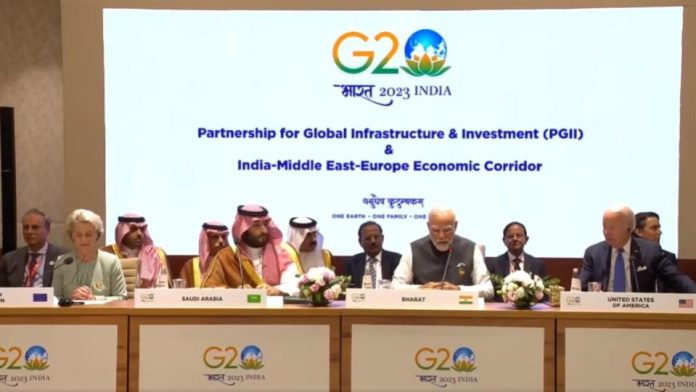In a groundbreaking development, India, the Middle East, and Europe are set to launch an economic corridor- “The India-Middle East-Europe Economic Corridor,” that promises to reshape global trade and connectivity. This visionary initiative is the first of its kind, involving collaboration between India, the United Arab Emirates (UAE), Saudi Arabia, the European Union (EU), France, Italy, Germany, and the United States. The project was unveiled during the annual Group of 20 summit hosted by India and attended by U.S. President Joe Biden, European Commission President Ursula von der Leyen, among other G20 members and invited dignitaries. The latest project is a component of the Partnership for Global Infrastructure Investment (PGII), an initiative led by Western countries that aims to finance infrastructure projects worldwide. This initiative is perceived as a response to China’s Belt and Road Initiative (BRI).
A historic route
The India-Middle East-Europe economic corridor is a historic endeavor that seeks to bolster economic growth and political cooperation among participating nations. This ambitious project will create a direct link between India and Europe, substantially reducing trade transit times. Ursula von der Leyen, European Commission President, stated, “The ‘India-Middle East-Europe’ economic corridor is historic. It will be the most direct connection till date that will make trade faster.”
One of the central objectives of this corridor is to expedite trade between India and Europe. Ursula further added, “An India – Middle East – Europe economic corridor will make trade between India and Europe 40% faster”. This efficiency boost will not only save time but also reduce costs associated with transportation. US President Joe Biden said, “This is a big deal. This is a really big deal.”
Key components of the corridor
The India-Middle East-Europe economic corridor will be a multi-faceted project with several crucial components:
- Rail and Shipping Links: The corridor will include railway and shipping connections that traverse through the UAE, Saudi Arabia, Jordan, and Israel, facilitating seamless movement of goods and services.
- Digital Connectivity: In addition to physical infrastructure, the project aims to enhance digital connectivity, allowing for smoother data transfers and communication.
- Green Hydrogen: The corridor will support the production and transportation of “green hydrogen,” a clean energy source that can potentially revolutionize the energy landscape in the participating regions.
- Energy Resources: By linking Middle Eastern oil-rich nations with India and Europe, the corridor will contribute to the transport of energy resources, reducing dependence on fossil fuels.
While the primary focus of the corridor is economic, its significance extend into geopolitical domain as well. By connecting India’s massive market with Western countries, the corridor has the potential to reshape global trade dynamics. This initiative can serve as a counterbalance to China’s Belt and Road Initiative (BRI), which has been expanding its influence worldwide. This economic corridor might also aid in normalizing relations between Israel and Arab Gulf states, which have historically been strained.
This is the first-of-its-kind economic corridor, this historic initiative is based on connectivity and infrastructure. The India-Middle East-Europe economic corridor has the potential to be a game-changer in global trade and connectivity. It addresses critical economic and geopolitical objectives while promoting sustainability through green energy initiatives.

